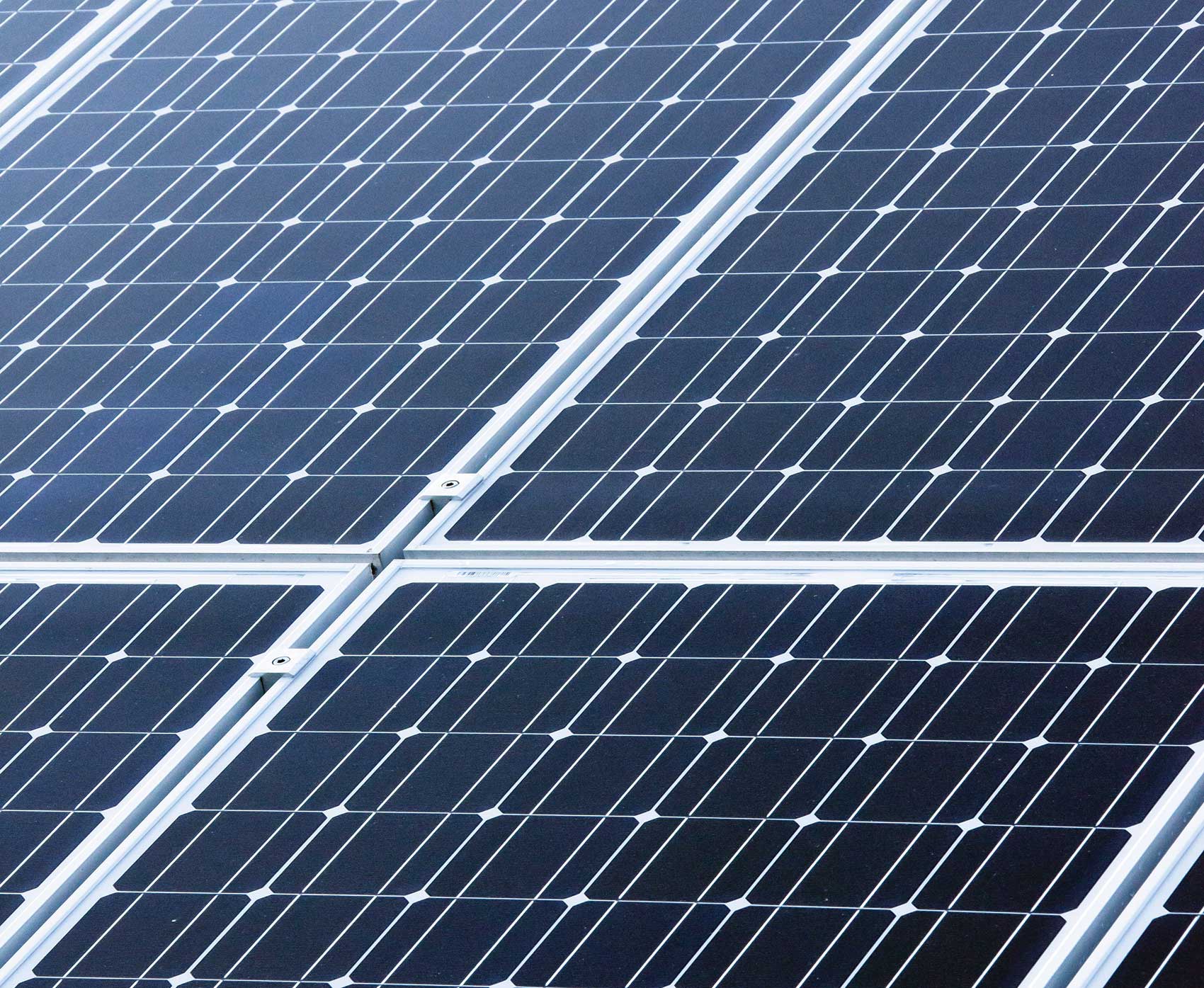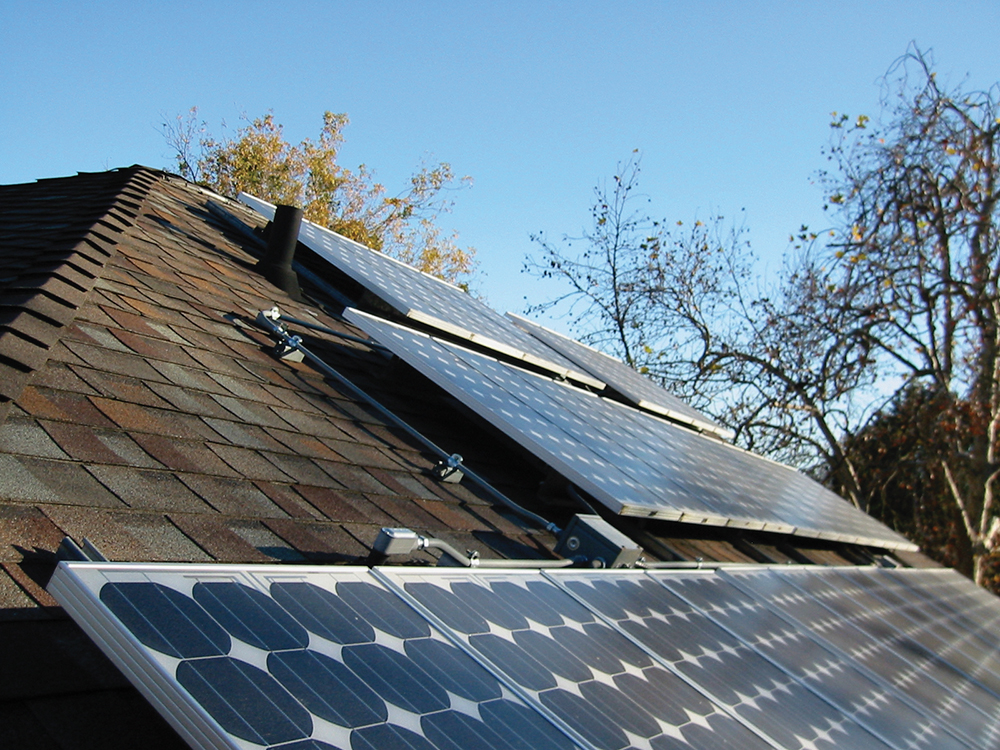Looking at the PV array in a PV system, many installers and inspectors are confused by new system voltage calculations that may be required by the Code specific to PV systems. Code Informational Notes also address voltage drop that may be applied to the DC wiring from the array to the inverter. This article will cover both of those subjects.
Example — Module Open-Circuit Voltage
A PV module, or a string of series-connected modules, has a rated open-circuit voltage that is measured (and labeled on the module) at an irradiance of 1000 W/m2 and a cell temperature of 25°C (77°F). This voltage increases from the rated voltage as the temperature drops below 25°C. It is necessary to calculate this voltage at the expected lowest temperature at the installation location to ensure that it is less than the maximum input voltage of the inverter and less than the voltage rating of any connected conductors, switchgear, and overcurrent devices (usually 600 volts). Because parallel connections of strings do not affect open-circuit voltage, the number of strings connected in parallel is not involved with this calculation.
Where module temperature coefficients are available, Section 690.7 of the NEC allows the open-circuit voltage of a PV array to be determined at the lowest expected temperature at the installation location. Alternatively, Table 690.7(A) can be used to determine a multiplier that was applied to either the module- or string- (a series connection of PV modules) rated VOC.
The rated VOC is measured at 25°C (77°F) and is printed on the back of the module and in the module’s technical literature. To use Table 690.7(A), determine the lowest expected temperature, look up the factor from the Table for that temperature (which ranges between 1.02 at 24°C to 1.25 at -40°C), and multiply the factor by the rated VOC.
For example, a module has a VOC of 35 volts (at STC) and is going to be installed where the temperature dips to -17°C.
The factor from Table 690.7(A) is 1.18 and the cold temperature VOC for this module is 35 x 1.18 = 41.3 volts.
If 12 modules were going to be connected in series, the string VOC in cold weather would be 12 x 41.3 = 495.6 volts.
The string voltage at STC-rated conditions could also be calculated first and then apply the temperature factor. In this case, the 12 modules in series would have a string open-circuit voltage of 12 x 35 = 420 volts at 25°C. Then the 1.18 factor is applied to get 1.18 x 420 = 495.6 volts; the same answer as before.
While Table 690.7(A) is still valid and was refined with 5°C increments in the 2011 NEC, new modules may have different technologies than the silicon module technology used to develop the table.
The use of the module temperature coefficients will provide a more accurate calculation of the cold weather maximum system voltage. To add to the confusion, PV module manufacturers present these temperature coefficients in two different ways.
Example — Percentage Coefficients
One way of presenting these data is to specify them as a percentage change, and they are expressed as a percentage change in VOC for a change in temperature measured in degrees Celsius. Note that the temperature used is a change in temperature from the rated 25°C.
For example: The Voc temperature coefficient is given as -0.36% per deg Celsius, or -0.36% / °C.
The module has a VOC of 45 volts at 25°C (77°F) and is going to be installed where the expected lowest temperature is -10°C (14°F). Because the temperature coefficient is given in degrees Celsius, all numbers must be in degrees Celsius. The change in temperature is from 25°C to -10°C. This represents a change in temperature of 35 degrees. The minus sign in the coefficient can be ignored if we remember that the voltage increases as the temperature goes down and vice versa. Of course, if you are an engineer or a mathematician, feel free to use the minus sign in an algebraic equation.
Applying the coefficient shows that the percentage change in VOC resulting from this temperature change is 0.36% / °C x 35°C = 12.6%.
Note that where division and multiplication are involved in a calculation, they are performed from left to right. Where additions and subtractions are combined with multiplications and divisions, the additions and subtractions are performed before any multiplications. Parentheses may be added to clarify the order of the operations, and calculations inside the parentheses should be performed first.
This percentage change can now be applied to the rated VOC of 45 volts. And, at -10°C, the VOC will be 1.126 x 45 = 50.67 V.
For the mathematically oriented person, the equation looks like this:
VOC [cold] = VOC [STC] x (1 + ((-0.36)/100) x (-10-25)))
= 45 x (1 + .0036 x 35)
= 45 x 1.126
= 50.67
Eleven of these modules could be connected in series and the cold-weather voltage would be 11 x 50.67 = 557.37 V, and that voltage is less than a 600-volt equipment limitation.
Example — Millivolt Coefficients
Other PV module manufacturers express the Voc temperature coefficient as a millivolt coefficient. A millivolt is one one-thousandth of a volt, or 0.001 V.
A typical module with an open-circuit voltage (at 25°C) of 65 volts might have a temperature coefficient expressed as:
-240 mV per degree Celsius, or -240 mV/°C
If it is installed where the expected low temperature is -30°C (-22°F), then there is a 55°C degree change in temperature from 25°C to -30°C. Again, the calculations must be accomplished in degrees Celsius, because that is the way the coefficient is presented.
Millivolts are converted to volts by dividing the millivolt number by 1000.
240 mV / 1000 mV/V = 0.24 volts
The module Voc will increase 0.24 V/°C x 55°C = 13.2 volts as the temperature changes from 25°C to -30°C.
The module VOC will increase from 65 volts at 25°C to 65 + 13.2 = 78.2 volts at the -30°C temperature.
In this PV system, the inverter maximum input voltage was listed as 550 volts. How many modules could be connected in series and not exceed this voltage? The maximum inverter voltage of 550 volts is divided by the cold-weather open-circuit voltage for the module of 78.2 volts.
550 / 78.2 = 7.03 modules and the correct answer would be seven modules.
7 x 78.2 V = 547.4 V
Eight modules could not be used because the open-circuit, cold-weather voltage would exceed 550 volts.
8 x 78.2 V = 625.6 V
Example — Expected Lowest Temperature for PV Systems?
What is the source of the expected lowest temperature? Normally, this temperature occurs in the very early morning hours just before sunrise on cold winter mornings. The PV modules are, in many cases, a few degrees colder than the air temperature due to night-sky radiation effects.
The illumination at dawn and dusk are sufficient to produce high VOC, even when the sun is not shining directly on the PV array and has not produced solar heating of the modules. And in many locations, cold temperatures are coupled with high winds and the winds can remove solar heating from the module, even in bright sun.
A conservative approach would be to get weather data showing the record-low temperature of the area and use this as the expected low temperature. Other data show more moderate low temperatures associated with the data used to size heating systems. See the Informational Note on 690.7(A).
The National Renewable Energy Laboratory maintains data that shows the record lows for many locations in the United States (http://rredc.nrel.gov/solar/old_data/nsrdb/1961-1990/redbook/mon2/state.html).
Local airports and weather stations may have historical data on low temperatures.
Also, weather.com has data on file accessble by ZIP codes (www.weather.com/weather/climatology/monthly/zip code).
Example — Module Short-Circuit Current
In most silicon PV modules, the module short-circuit current does increase very slightly as temperature increases, but the increase is so small as to be negligible at normal module operating temperatures. It is normally ignored.
Example — PV Systems Voltage Drop
In common, utility-interactive PV systems, PV arrays may operate from 50–60 volts up to near 600 volts, depending on the system design. With nominal, peak-power, and open-circuit voltages to deal with, installers and inspectors are sometimes in a quandary as to how to calculate voltage drops from PV arrays to the inverters.
A utility-interactive inverter will normally operate in a manner that keeps the array voltage near the peak-power voltage (also called the maximum power point). While this voltage can vary with temperature—and temperatures vary considerably—using the rated maximum power point voltage and maximum power point current of the modules results in the easiest method of calculating voltage drops.
A typical PV array may have a single string of ten modules in series connected to the inverter 200 feet away with 10 AWG USE-2/RHW-2 conductors. The maximum power point (mpp)numbers for the module are:
Vmpp = 45V
Impp = 5.5 amps
For a single string of 10 modules, the string maximum power point numbers are:
Vmpp = 450V
Impp = 5.5 amps
Table 8 in Chapter 9 of the NEC gives conductor resistance per 1000 feet at 75°C.
For an uncoated, stranded 10 AWG conductor, the resistance is 1.24 ohms per 1000 feet.
The total conductor length (both ways) must be used in the calculation and this is 400 feet.
The resistance for 400 feet of a 10 AWG conductor is 400/1000 x 1.24 = 0.496 ohms.
The current at the maximum power point is 5.5 amps. Voltage drop is found by multiplying this current by the conductor resistance:
5.5 x 0.496 = 2.728 volts.
Expressed as a percentage, 2.278/450 x 100 = 0.606% or about 0.6%, and that is much less than the Informational Note recommendation of 3% for most circuits.
Of course, the losses in the PV DC disconnect were not counted, but they are typically less than 1% on these circuits.
Example — Voltage Drop, Another Perspective
When dealing with the dc input circuits of a utility-interactive inverter, the inverter operates the array at the maximum power point with a maximum power voltage (Vmpp) and a maximum power current (Impp).
Because these parameters are affected by irradiance and temperature, it is difficult to determine what voltage and current should be used in the voltage drop equation.
The procedure above uses module specifications at standard test conditions that are based on the rating conditions of an irradiance of 1000 W/m2 and a cell temperature of 25°C (which is not a very realistic temperature under actual operating conditions).
One conservative approach is to use the module manufacturer’s specified normal cell operating temperature from the module data when it is available. Normal cell operating temperatures are typically in the range of 42°C to 52°C and is a measured temperature of the module when the irradiance is 800 W/m2, ambient temperature is 20°C and the wind is blowing across the module at 1m/sec.
This temperature is used to adjust the Vmpp and Impp numbers presented at standard test conditions to values associated with the higher normal cell operating temperature. T
The maximum power voltage will be reduced and the maximum power current will be increased very little if at all. Voltage drop will be reduced.
Excerpted from IAEI’s Photovoltaic Power Systems, 2017. Purchase online at iaei.org.











Find Us on Socials